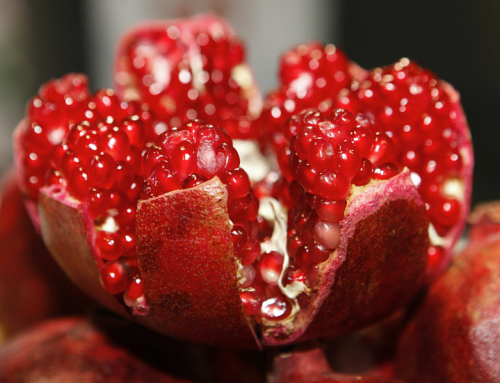The Non-Animal Chondroitin Sulfate for joint benefits
According to EULAR (the European league against rheumatism)
Chondroitin sulfate (CS), a basic natural component of cartilage and synovial fluid, is used to help to reduce the risk of Osteoarthritis, the risk of joint degeneration and the risk of cartilage deterioration [5].
CS, like other natural polysaccharides, is today derived from animal sources by extraction and purification processes [6]. As a consequence, source material, manufacturing processes, the presence of contaminants and many other factors contribute to the quality, structure and physico-chemical properties of the final product and of the overall biological and pharmacological actions of these agents. The industrial production of CS uses animal tissue sources as raw material, derived from different species of animals. Actually it generally relies on bovine, porcine, chicken or cartilaginous fish such as sharks and skate by-products, in particular cartilage, as raw material [7, 8]. More important, a mix of all these sources are possible producing a CS final product having mixed characteristics and not well identified activities.
The potential consumer safety and quality problems associated with the use of animal-derived CS, suitable for pharmaceutical and nutraceutical applications, have historically prompted the search for an alternative source.
The new ingredient, branded as Mythocondro®, is the first CS obtained with a fermentation-based manufacturing process followed by a chemical selective sulfation. The result of this innovative approach is a non-animal CS with homogeneous structure and the presence of sulfate groups in defined positions, a constant charge density and molecular mass parameters.
Mythocondro® warrants high purity, clear identity profile, batch-to-batch reproducibility, established safety with an astounding very low content of proteins and other (macro)molecules, as well as biological activity.
Mythocondro® promises to change completely the CS industry providing a reliable and reproducible source of product. Furthermore it is the first chondroitin sulfate suitable for vegetarians and free from restrictions of use related to religious and supply issues.
Mythocondro® solves any concerns related to origin of the production, the possible presence of transmissible infective agents, the contamination and adulterations typical of animal-derived raw materials.
Mythocondro® has five patents based upon scientific advances in the biotechnological areas ((PCT/EP2012/058654; US 8,609,394; US 8,771,992; US 8,664,196; EP217004; EP2852437; JP577036; PCT/EP2014/051308).
Of course, the non-extractive origin guarantees:
- Homogeneous structure and physico-chemical properties
- High purity
- Very low content of proteins
- No presence of virus and/or prions
- Highly and point-by-point controlled production process for highly controlled and reproducible final product
Mythocondro® has been extensively studied in order to evaluate its characteristics, safety profile and efficacy (Miraglia et all. Food Chem Toxicol 2016; 93: 89-101.) Pre-clinical and clinical studies have been carried out demonstrating superior biological activity versus animal-derived CS both in vitro and in vitro. (Bauerova et all. Pharmacology 2014; 94: 109-14.)
Mythocondro® will be officially launched at the next Supply Side West, where those attending the Trade Show in Las Vegas will have a unique opportunity to discover the scientific steps forward of the product by participating to the speech organized by Gnosis in the Education Session of the VENDORBRIEF Presentation. The speech will be led by Prof. Nicola Volpi, Associate Professor of Biochemistry, University of Modena and Reggio Emilia, Department of Life Sciences, Modena, Italy, one of the global leading expert in chondroitin.
For more information contact marketing@gnosis-bio.com
References:
-
Jordan KM, Arden NK, Doherty M, et al. EULAR Recommendations 2003: an evidence based approach to the management of knee osteoarthritis: Report of a Task Force of the Standing Committee for International Clinical Studies Including Therapeutic Trials (ESCISIT). Ann Rheum Dis 2003; 62: 1145-55.
-
Zhang W, Doherty M, Leeb BF, et al. EULAR evidence based recommendations for the management of hand osteoarthritis: report of a Task Force of the EULAR Standing Committee for International Clinical Studies Including Therapeutics (ESCISIT). Ann Rheum Dis 2007; 66: 377-88.
-
Zhang W, Nuki G, Moskowitz RW, et al. OARSI recommendations for the management of hip and knee osteoarthritis: part III: Changes in evidence following systematic cumulative update of research published through January 2009. Ost Cartil 2010; 18: 476-99.
-
WHO Scientific Group on the Burden of Musculoskeletal Conditions at the Start of the New Millennium, The burden of musculoskeletal conditions at the start of the new millennium. World Health Organization Technical Report Series, 2003. 919: p. i-x, 1-218, back cover.
-
Martel-Pelletier J, Boileau C, Pelletier JP, et al. Cartilage in normal and osteoarthritis conditions. Clin Rheumatol 2008; 22: 351-84.
-
N (Ed). 2006. Chondroitin sulfate: structure, role and pharmacological activity. Amsterdam, Boston, Heidelberg, London, New York, Oxford, Paris, San Diego, San Francisco, Singapore, Sydney, Tokyo: Academic Press.
-
Volpi N. Quality of different chondroitin sulfate preparations in relation to their therapeutic activity. J Pharm Pharmacol 2009; 61: 1271-80.
-
Volpi N. Analytical aspects of pharmaceutical grade chondroitin sulfates. J Pharm Sci 2007; 96: 3168-80.




